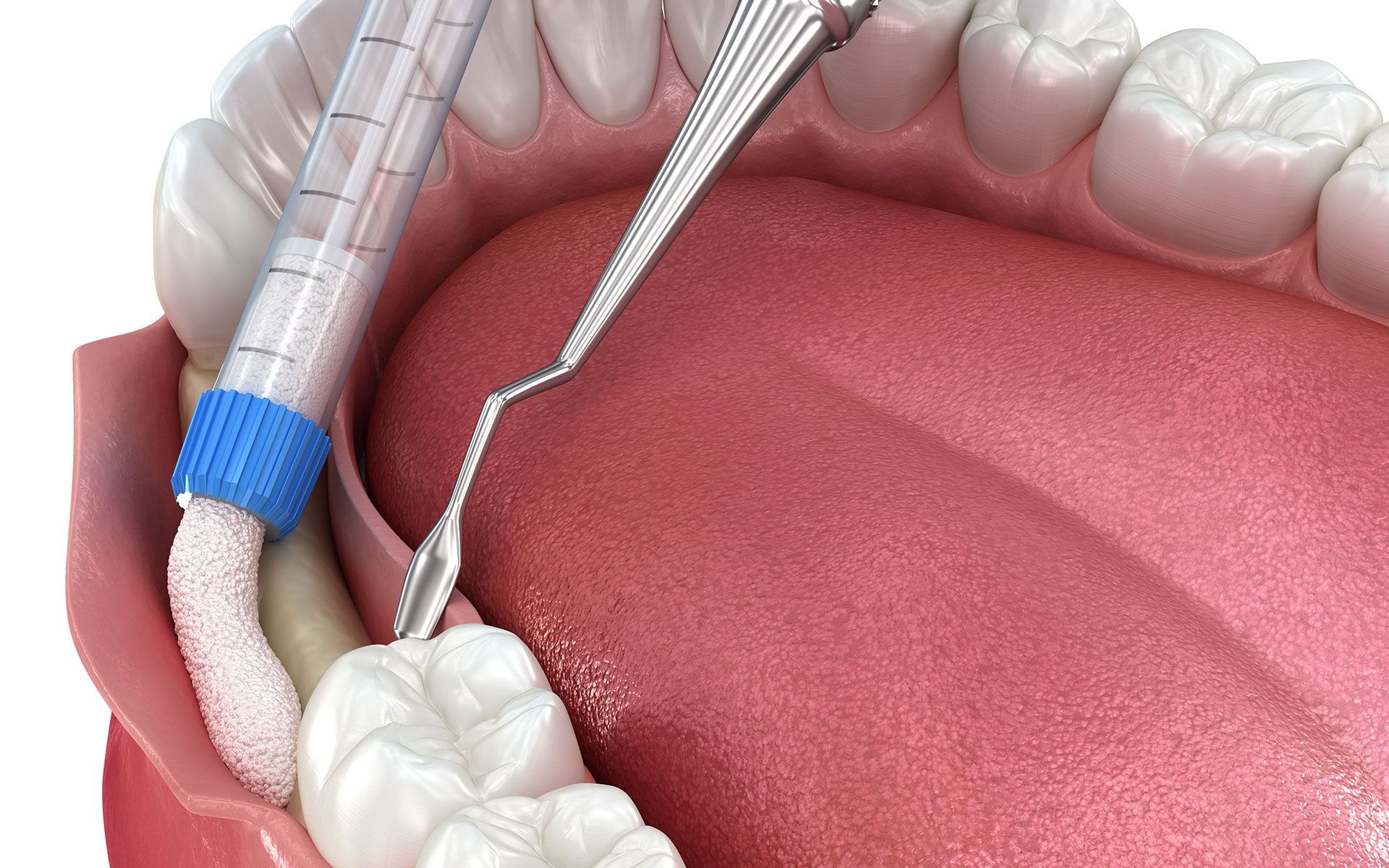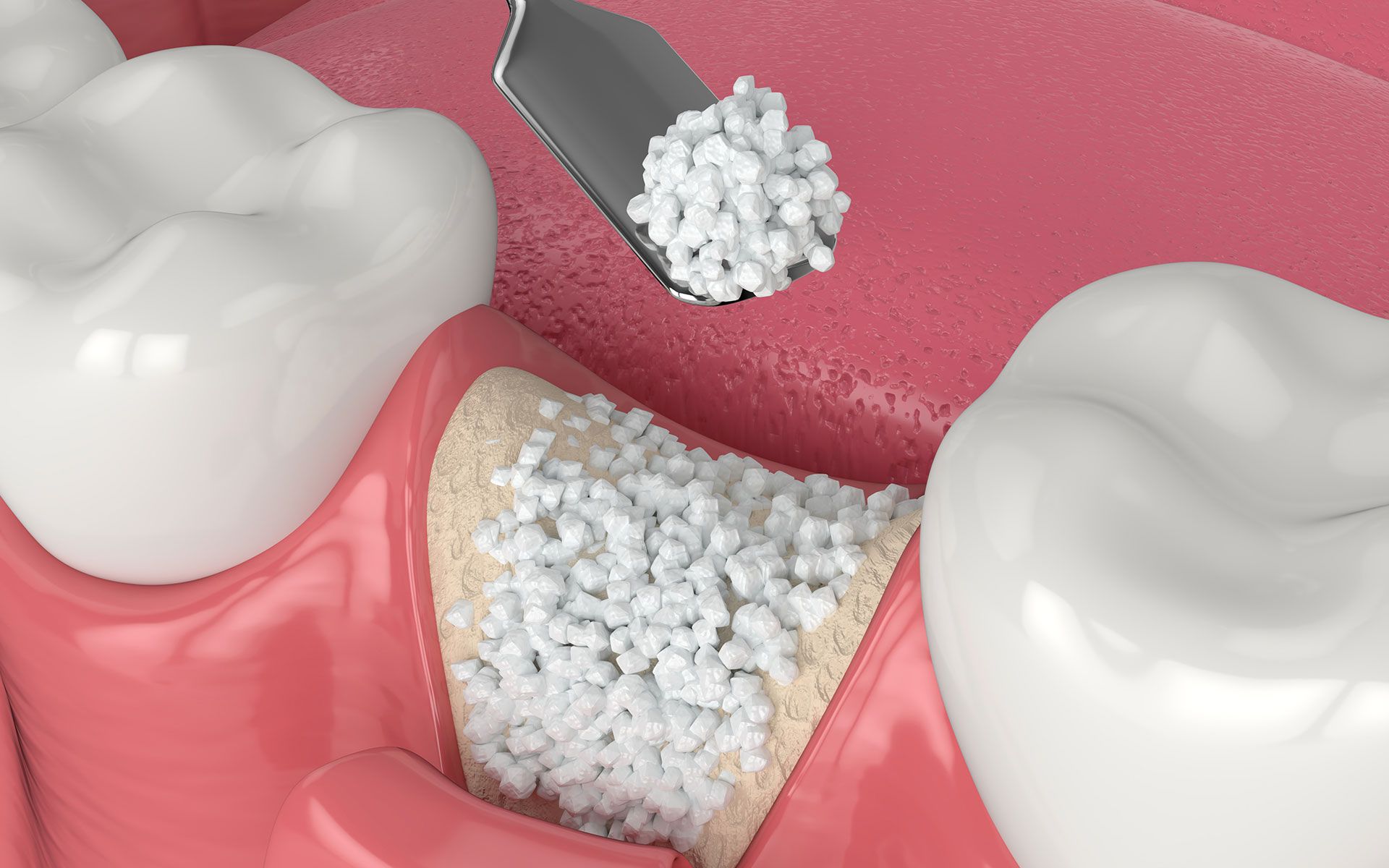Bone Grafting & Socket Preservation in Smithtown, NY
Maintaining adequate jawbone structure is critical to the long-term success of dental treatments such as implants. At Norman M. Rubin, DDS in Smithtown, NY, we offer bone grafting and socket preservation procedures to rebuild and maintain the strength of the jawbone following tooth loss or extraction. These procedures are essential for patients considering dental implants or for those experiencing jawbone deterioration over time.
Understanding Bone Loss in the Jaw
When a tooth is lost or extracted, the surrounding bone in the jaw begins to shrink. Without stimulation from the tooth root, the bone tissue gradually resorbs. This process can compromise the stability of nearby teeth and reduce the volume and density of bone needed for future procedures such as dental implants.
Bone loss also affects facial structure, contributing to a sunken or collapsed appearance around the mouth and jaw. Rebuilding this bone with grafting procedures helps restore function and aesthetics, and it lays the groundwork for permanent dental restorations.
What Bone Grafting Involves
Bone grafting is a surgical procedure in which bone material is added to the jaw to rebuild areas that have experienced resorption. This grafting material may come from the patient’s own body (autograft), a donor source (allograft), or a synthetic substitute (alloplast), depending on the patient’s needs and the extent of bone loss.
The process begins with a detailed examination of the jaw, often including 3D imaging to assess bone volume and determine graft placement. Once the site is prepared, the grafting material is placed where bone is deficient. Over time, the body integrates the graft, generating new bone cells and reinforcing the structural integrity of the area.
This new bone formation allows for future dental procedures—especially implant placement—that require sufficient jawbone mass for stability.
Ridge Augmentation for Dental Implant Candidates
One common type of bone grafting is ridge augmentation. This procedure is used when the alveolar ridge, the bony ridge that holds the teeth, has diminished due to long-term tooth loss or trauma. Ridge augmentation helps increase the width and height of the jawbone to support a dental implant.
During this procedure, the gum tissue is lifted, and grafting material is added to the deficient area of the ridge. The site is then closed, and healing is allowed to take place over several months. Once the graft is fully integrated, the jawbone is strong enough to support the precise placement of dental implants.
When multiple adjacent teeth are missing, implant-supported bridges may be recommended. This type of restoration uses two or more dental implants to anchor the bridge, eliminating the need to modify natural teeth for support. Implant bridges provide a more stable alternative to traditional bridges and help preserve the health of the surrounding teeth and jawbone.
Sinus Lift Procedures for Upper Jaw Bone Deficiency
For patients seeking implants in the upper back region of the mouth, a sinus lift may be necessary if there is insufficient bone height beneath the sinus cavity. A sinus lift—also known as sinus augmentation—involves gently lifting the sinus membrane and placing bone graft material beneath it.
This creates adequate vertical space for implant placement while ensuring the sinuses are not compromised. The procedure is commonly used in cases where natural bone volume in the upper jaw is reduced due to prolonged tooth loss or anatomical limitations.
Socket Preservation After Tooth Extraction
Socket preservation is a specific type of bone grafting performed immediately following tooth extraction. The goal is to prevent bone collapse at the extraction site and maintain the natural contours of the jaw for future restorative procedures.
After the tooth is removed, bone graft material is placed directly into the socket. A protective membrane may be added to support healing and protect the graft. This technique is especially valuable for patients who plan to receive dental implants, as it preserves bone height and width right from the outset.
Socket preservation not only supports implant success but also minimizes the risk of soft tissue recession and helps maintain a natural gum line.
Healing and Integration Timeline
Bone grafting is a gradual process that requires several months for complete integration. Healing times vary depending on the extent of the graft and the type of material used. In most cases, patients can expect three to six months of healing before any additional dental procedures, such as implants, can be performed.
During this period, follow-up visits at our Smithtown, NY office ensure the graft site is healing properly. Imaging and clinical evaluations are used to track new bone formation and determine readiness for the next phase of treatment.
Advanced Planning and Surgical Precision
At Norman M. Rubin, DDS, bone grafting and socket preservation procedures are supported by advanced imaging tools, including cone beam CT scans and digital diagnostics. These technologies allow us to evaluate bone loss with precision and plan the most effective grafting approach based on the patient’s unique anatomy.
Every case is carefully evaluated to determine the need for grafting, the best source of grafting material, and the ideal timing for subsequent treatments such as dental implants. This individualized approach ensures predictable outcomes and long-term success.

